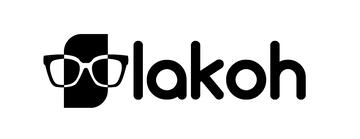2.00 Diopter: What Does it Mean?

1. What Is Diopter?
Diopter (D) is the unit used to measure the optical power of a lens. It describes how much the lens bends (or refracts) light to help focus images clearly on the retina. The diopter value determines how strong a lens is in correcting vision problems.
-
Positive diopters (+D): Used for farsightedness (hyperopia) and presbyopia (age-related near vision loss). These lenses help with close-up tasks like reading and using a smartphone.
-
Negative diopters (-D): Used for nearsightedness (myopia). These lenses allow distant objects, such as road signs or a TV screen, to appear clear.
-
Higher absolute diopter values (e.g., ±6.00D or more): Indicate stronger prescriptions for more significant vision correction.
2. What Does a 2.00 Diopter Lens Mean?
A 2.00 diopter lens refers to a lens with moderate optical power, commonly used in vision correction. Whether the diopter is positive or negative determines how it affects vision:
-
+2.00D lens (Convex lens): Helps with farsightedness or presbyopia, making close-up objects clearer. Often found in reading glasses and progressive lenses.
-
-2.00D lens (Concave lens): Corrects mild myopia, improving distance vision. Used in prescription eyeglasses and contact lenses.
How Does It Compare to Other Diopters?
A +1.00D lens provides mild magnification for close-up work, while a +3.00D lens offers stronger correction for reading. Similarly, a -1.00D lens corrects very mild nearsightedness, while a -4.00D lens is for more significant myopia.
3. How Diopters Work in Vision Correction
Vision problems occur when light does not focus correctly on the retina:
-
In nearsightedness (myopia), light focuses in front of the retina, making distant objects blurry. Negative diopter lenses (-D) spread out the light rays to push the focus back onto the retina.
-
In farsightedness (hyperopia) and presbyopia, light focuses behind the retina, making close-up objects blurry. Positive diopter lenses (+D) converge light rays to bring the focus forward onto the retina.
A 2.00 diopter lens adjusts the light's focus to compensate for these refractive errors, improving clarity at the needed distance.
4. Common Uses of 2.00 Diopter Lenses
✔️ Reading Glasses (+2.00D for Presbyopia)
As people age, the eye’s natural lens loses flexibility, making it harder to focus on close-up objects. This condition, presbyopia, usually starts after age 40. A +2.00D lens is commonly prescribed for reading glasses, allowing for clear vision at a comfortable reading distance.
✔️ Distance Glasses (-2.00D for Myopia)
A -2.00D lens corrects mild myopia, improving distance vision. People with this prescription typically struggle with activities like recognizing faces from afar, reading signs while driving, or watching TV without glasses.
✔️ Progressive and Bifocal Lenses
For individuals needing correction for both near and distance vision, progressive or bifocal lenses may include a +2.00D section for reading, combined with another prescription for distance vision in the same lens.
✔️ Computer Glasses
Some people experience eye strain from prolonged screen use. Special computer glasses with a +2.00D enhancement can help relax the eyes when focusing on a monitor for long hours.
5. Understanding Diopters in Everyday Terms
Think of diopters as a camera's focus adjustment:
-
A +2.00D lens is like a magnifying glass, helping you see fine details up close.
-
A -2.00D lens is like adjusting binoculars to make distant objects clearer.
Choosing the right diopter ensures sharp, comfortable vision for your daily tasks.
6. How to Find the Right Diopter for Your Eyes
The most accurate way to determine your diopter prescription is through an eye exam with an optometrist. However, some general guidelines include:
-
If you need reading glasses, you can start with a +1.00D or +1.50D and increase the strength if needed.
-
If distant objects look blurry, a -2.00D or similar prescription may be required.
-
Avoid guessing for prescription glasses—an eye test provides the most precise results.
7. Conclusion: Why Understanding Diopters Matters
Diopters determine how lenses correct your vision. A 2.00 diopter lens is a common strength used for both near and distance vision correction. Whether you need reading glasses, prescription lenses, or contact lenses, knowing how diopters work helps you make informed choices for clearer, more comfortable vision.






